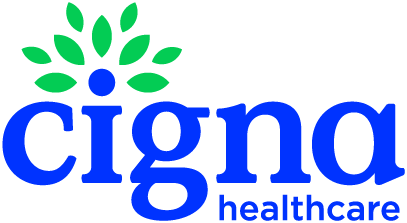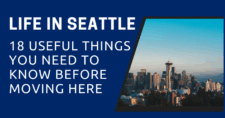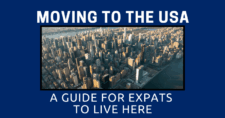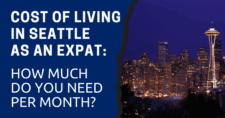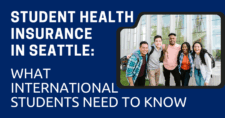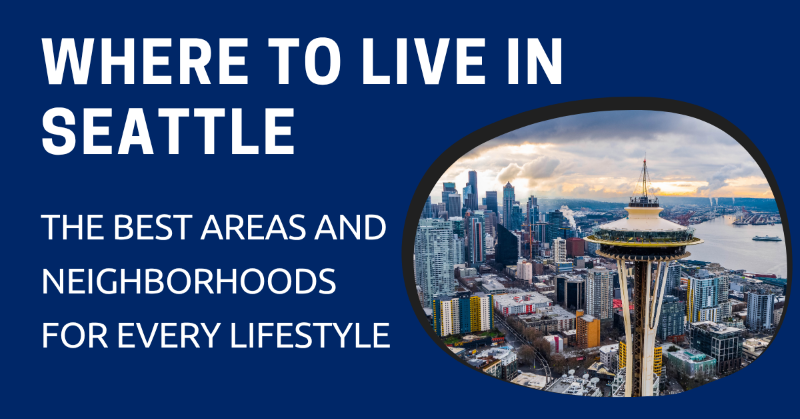
Explore Seattle’s best areas to live, from Downtown to Capitol Hill. See which neighborhood fits your lifestyle and budget.
Are you still unsure about which Seattle neighborhood you want to live in, or do you just want to learn more about each one?
Seattle is made up of distinct neighborhoods, each offering different vibes that suit individuals’ preferences and lifestyles. Choosing to live in a neighborhood that matches your lifestyle will save you time and money, and importantly, make you feel at home fast.
I’ve been living in Seattle for many years as a student of the University of Washington. After that, I still come to Seattle regularly and lived in many neighborhoods including the Capitol Hill, the U District, and the city of Auburn.
I’ve come to understand what each neighborhood is really for, what kind of people live in the area, how it functions, and what kind of life it supports. In this article, I’ll go over some of the most prominent neighborhoods in Seattle to help you get the general idea of what it’s like to live in each different part of this Pacific Northwest city.
This article will take approximately 29 minutes to read. Don't have the time right now? No worries. Email the ad-free version of the article to yourself and read it later!
Disclaimer: This article may include links to products or services offered by ExpatDen's partners, which give us commissions when you click on them. Although this may influence how they appear in the text, we only recommend solutions that we would use in your situation. Read more in our Advertising Disclosure.
Contents
Key Takeaways
- Seattle offers a wide range of neighborhoods to match different lifestyles, from Downtown living to quiet family areas like Beacon Hill.
- Downtown and Capitol Hill suit those who want nightlife, walkability, and convenience, though they come with higher costs and safety concerns.
- South Lake Union attracts tech professionals with modern apartments, waterfront views, and quick access to offices.
- Beacon Hill is ideal for families who prefer space, scenic views, and a calmer environment away from city noise.
- U District is affordable and student-friendly, with easy access to the University of Washington and a youthful, diverse atmosphere.
- Public transportation connects most areas well, but car owners may find suburban neighborhoods more practical.
- When choosing where to live, balance lifestyle, safety, and commute time to find the best fit for your needs.
Overview of Seattle Neighborhoods
Since Seattle has a diverse range of neighborhoods, you’re likely to find one that matches your lifestyle. Let’s have a quick rundown on each neighborhood mentioned in this article:
- Downtown is where all the trendy lifestyles are. Living here is expensive. Also, like in many downtown areas globally, Seattle’s Downtown has experienced significant urban decay, and some areas are not so visually appealing.
- Capitol Hill has a cosmopolitan lifestyle and is a great place to try international cuisine, and exotic nightlife. The downside is that it’s full of homeless people. From my experience, it’s also prone to political unrest.
- South Lake Union is an upscale neighborhood. The majority of people who live here are young professionals who have jobs in the tech industry.
- Beacon Hill is a beautiful neighborhood with expensive housing. It has a unique mix of cultures and is fairly safe compared to all others.
- U District is a go-to for students attending the University of Washington and other educational institutions in the Seattle area. It has decent and affordable apartments, making it a good option for those on a budget.
The city bus and the light rail run throughout the city and reach almost every neighborhood. Personally, I think it’s easier to use public transport the closer you are to the city center, where there are more transit routes.
On the cultural aspects, immigrants, especially from Asia, have played a major role in shaping Seattle’s cosmopolitan landscape. You can still find traces and remnants of historic ethnic enclaves in several places, like the International District/Chinatown and the Japanese Garden.
In terms of safety, the crime rate in Seattle is higher than the US national average. Areas such as Downtown and Capitol Hill can be unsafe, especially at night, so it’s best to keep this in mind when considering which neighborhood to live in.
Neighborhoods to Know
Let’s explore the neighborhoods I find most interesting. I will go over the pros and cons (based on my personal preferences), give a general idea of housing and transportation, and discuss other aspects like safety and social life:
Downtown
Downtown is located right in the city center. To the west is Elliott Bay, right next to the waterfront. It’s separated from First Hill and Capitol Hill by I-5 to the east. To the north is South Lake Union, and to the south is the industrial Sodo and Beacon Hill.
In general, Downtown is an upscale and expensive neighborhood with dense high-rise development and lots of social activity. The neighborhood has the highest cost of living in Seattle.
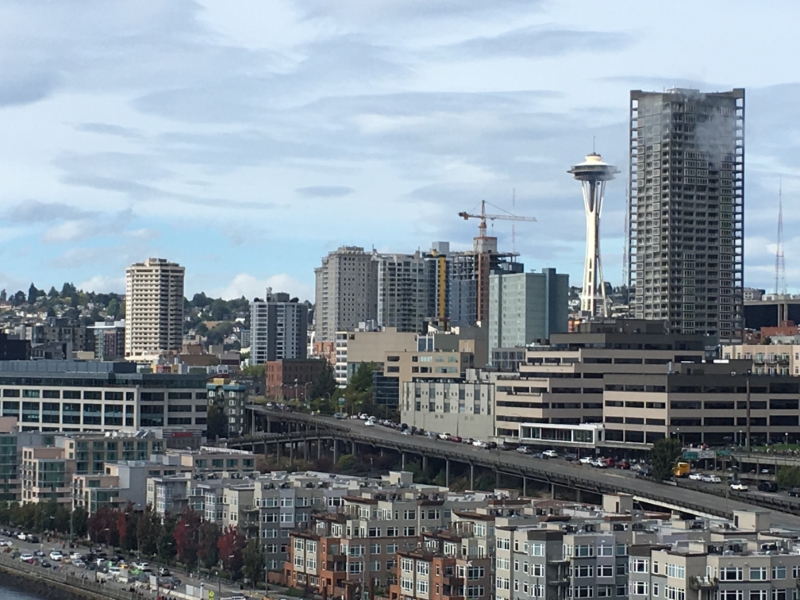
Pros
- You’re likely to find luxurious and convenient housing here.
- There are plenty of restaurants and grocery stores throughout the neighborhood. Some office buildings also include restaurants. You’ll also find many Starbucks stores throughout the area.
- Living here is convenient if you work in or near Downtown. It can cut down on your transport costs and travel time. Walking is also easily accessible since it has the most extensive network of sidewalks. I used to walk around Downtown just for sightseeing and café hopping. A car-free lifestyle is totally possible.
- Honestly, Downtown Seattle has some of the best natural views because it’s right by Elliott Bay.
Cons
- Although the energetic social life can keep you alive for a while, Downtown comes with high housing costs. Moreover, since it’s filled with high-rise buildings, living inside a concrete box can kind of make you feel alienated and isolated sometimes.
- Crime and urban decay are big issues in Downtown. Homeless people are also around, but not as much as in Capitol Hill and South Lake Union. Certain areas, like the alleys on Pike St., are dirty and show signs of decay.
- Noise can wake you up at night. Well, it’s Downtown. It’s not only traffic noise though, but also other forms of noise, like from ventilation and mechanical systems. I personally find high-rise building noises relaxing, but they might be annoying to you.
- There’s heavy traffic most of the time, especially during rush hours. This, with the fact that there’s limited space in the neighborhood, can make things worse. If you own a car, be ready to find and rent a parking space.
Housing
Since there has been rapid high-rise development in the neighborhood, many of the buildings are newly built. However, you can still find a few old buildings, mostly on 1st Ave, with refurbished interiors.
Housing in Downtown is high-end.
The cost of renting or owning in Downtown is high. The majority of housing is apartments and condos. You’ll find studios and one-bedroom apartments and larger units. The average rental cost per month for one-bedroom apartments is US$3,065 (central business district), while condos’ price is around US$800,000 and up.
Transportation
If you live here, you can rely purely only public transportation. You can use the 1 Line for daily transit. Also, it’s walkable, so you don’t necessarily have to own a car to get around. Walking or taking the bus to get around is the most common way to commute.
- Light rail: The 1 Line runs through Downtown.
- Bus (locals call it Metro): many routes and stops in the area.
- Monorail: A nostalgic short ride between Westlake and Seattle Center.
Safety
The crime rate in Downtown is higher than in other neighborhoods. Property crime rates are high, so be sure to keep your things with you at all times. Also, don’t forget to lock your door. Personally, I didn’t usually wander around Downtown at night, unless I had to.
Lifestyle
Downtown is an especially popular neighborhood for trendy culture. If you’re the kind of person who enjoys visiting popular innovative spots, then Downtown has a lot to offer. Take, for example, in 2018, the first Amazon Go opened to the public here. Pike Place Market also has the first Starbucks store.
Nightlife is pretty upscale, so expect to pay more compared to other neighborhoods. Rooftop bars like The Nest and the Smith Tower Observatory Bar provide a variety of drinks and food and have some of the best views of Elliott Bay.
Most of the city’s attractions, like the iconic Space Needle (along with other attractions at the Seattle Center) and Waterfront Park, are here. There are several interesting museums that you can explore. Also, SIFF Cinema Downtown is one of my favorite movie theaters. It usually shows classic or arthouse films.
There are plenty of malls and shops, making it easy to find things you want to buy. The most famous malls are Westlake Center and Pacific Place. Although they’ve gradually become dead malls hosting a few boutique shops here and there at this point, I think they’re among the most visually appealing buildings in Downtown.
Additionally, if you enjoy jogging along the waterfront (though not at night), sightseeing, and being surrounded by beautiful scenery, Downtown is a great place to live.
Who Should Live in the Downtown?
Downtown is especially great for someone who has a lot of money to spend or works for one of the companies that are located in the area. Overall, it has all the social life and the city living vibe, though I’d say that it’s not a good place to live if you want a calm, quiet life.
Capitol Hill
Capitol Hill is located east of the city center. The neighborhood is strongly influenced by its nightlife culture and progressive politics and has several newly built and older low-rise buildings.
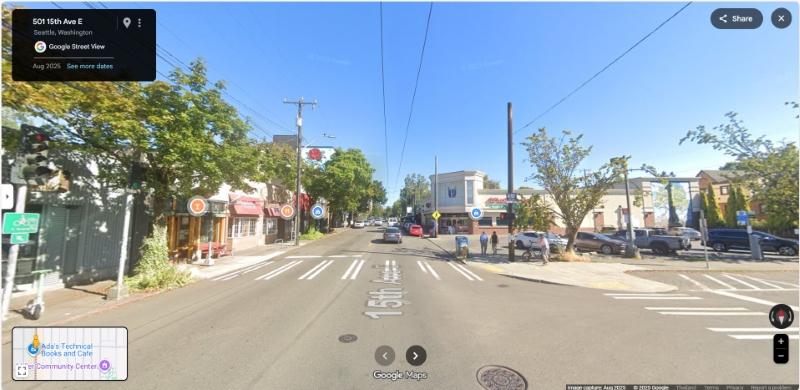
Pros
- Capitol Hill has plenty of housing options to choose from. You can find apartments, condos, and detached houses in the area. In my opinion, it has the best housing options in all of Seattle. It also feels more spacious and has more green space compared to Downtown.
- It has an extensive network of sidewalks, which makes it easy to walk around.
- Since it has a strong local culture, there’s always something to do, and it feels less like a tourist spot compared to Downtown. Some of the best (and most exotic) nightclubs and bars are here. The locals are friendly, and you can literally go to a nightclub and end up making friends more easily than in other neighborhoods.
- You’ll find all kinds of international cuisine around the neighborhood, especially Japanese, Chinese, and Thai foods, and some of them are among the best in Seattle.
- Most of the city’s hospitals are located in the Capitol Hill/First Hill area. If you’re the kind of person who likes to go for regular check-ups, then yeah, this is your place.
Cons
- High housing prices, but in some places, they are lower than in Downtown or other upscale neighborhoods.
- Crime is absolutely an issue in Capitol Hill. Shootings, drug activity, and theft are common, especially on and around East Pike St. Walking around the streets at night can make you a potential target of theft, or worse.
- The homeless problem is also apparent with homeless people taking up space on sidewalks or in front of grocery stores. This is one of the reasons why it isn’t so much of a tourist spot, honestly.
- Politics, specifically progressive politics, are very active here. Protests are common, and things can get out of hand and turn into riots.
Housing
Capitol Hill sees rapid gentrification and overhauling of its zoning since the 2010s, and it’s still on going. Accordingly, there are many newly built low-rise apartments and condo buildings in the area.
Housing prices at Capitol Hill are slightly higher than other neighborhoods in Seattle. (But still cheaper than downtown) The average rental cost per month for one-bedroom apartments is US$2,151. Studios are around US$1,300 to US$1,800 per month, while detached houses usually start at US$300,000.
Transportation
The 1 Line stops at Capitol Hill Station, the only light rail station in the neighborhood. There are also several bus routes and stops.
Personally, I’d say the neighborhood is walkable and using the bus and light rail to get around is doable.
Safety
Back in mid-2020, there were protests just across the street from where I was staying. They took over Cal Anderson Park and occupied it. Over time, they grew into some kind of quasi-state called “Capitol Hill Autonomous Zone.”
The area around the park was looted and vandalized, and shootings skyrocketed. The pizza place on the first floor in the building I was staying in, along with other nearby stores in the area, basically barricaded their doors.
Eventually, it became a battleground between protestors and police months later, and the park was cleared by the police. That’s how bad politics can get in Capitol Hill. The whole time, I just stayed in my apartment and ordered delivery instead.
While it was eventually cleared by the police, the thing is, even before the park was occupied, it was already a dangerous place.
To this day it is still a dangerous place to be around at night. So, if you choose to live here, just avoid the park after dark and you should be fine. Protests can always pop up when things escalate, especially at and around Cal Anderson Park.
Most of the homeless people camp outside of that one QFC on Broadway on East Pike St. They can be aggressive sometimes.
Lifestyle
The overall lifestyle of Capitol Hill is shaped by its active social life, diverse dining options, and a cosmopolitan background.
Pony, on East Madison St., is among the most famous gay bars in the neighborhood. There are also several cafés and boba stores, such as Tea Addicts and Atulea.
On Sundays, there’s Capitol Hill Farmers’ Market on E Barbara Bailey Way.
I used to visit Elliott Bay Book Company a lot. It’s one of my favorite bookstores in Seattle. If you enjoy reading, want to explore a big place filled with books, and are interested in joining a book club, this place is for you.
There are several restaurants on East Pike and East Pine St. that serve some of the best international cuisine in the city. Personally, I think Bai Tong Thai Street Café has some of the best Thai food in Seattle. Ramen Danno and Udon Fresh offer cheap and tasty Japanese noodles and are always packed with people around noon.
On the northern end of the neighborhood, there’s a park called Volunteer Park. It is a decent spot to relax in that has beautiful natural scenery and plenty of walking paths. I also opened my bank account in this area.
Who Should Live in Capital Hill?
Capitol Hill is a great choice if you want to live close to the city center but not Downtown. It has plenty of green space but still preserves the city living vibe. The nightlife and cosmopolitan culture can keep you company. Also, it’s a great choice if you like to be near hospitals.
South Lake Union
South Lake Union, or SLU in short, is located just north of the city center. To the north of the neighborhood is Lake Union, lined with piers and a beautiful waterfront scene. It’s generally a quiet corporate neighborhood, mixed with natural lakeside vibes.
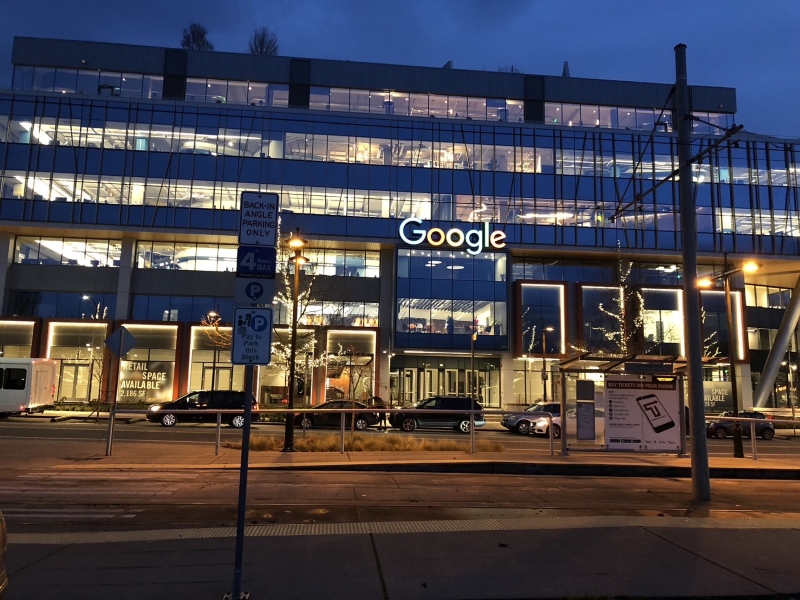
Pros
- It borders Belltown to the south and Lake Union to the north, making it possible for you to enjoy the green spaces and outdoor activities while still having access to Downtown much more quickly (south of Belltown). It’s also mostly flat, which makes getting around by bike much easier compared to the hills in other neighborhoods.
- Sidewalks from Downtown extend into this area, making it easy to walk.
- Several major tech companies, like Amazon and Google, have offices here. It’s a great place for young professionals to live and find jobs in the tech industry.
- I-5 runs close to the area. So, if you own a car, it’s much easier to get around.
- SLU has some of the most developed infrastructure in Seattle, thanks to recent rapid development driven by the Amazon corporate headquarters and Google offices there. Also, the neighborhood can be relatively quiet.
- It has its own streetcar, which is integrated with the city’s light rail and bus system.
- Relatively safe compared to other neighborhoods, like Downtown and Capitol Hill.
Cons
- SLU is an upscale area, so rental prices are high.
- Parking is limited because the neighborhood is made up of apartment and condo buildings. You’ll need to rent a long-term parking space.
- Traffic can get pretty bad most of the time, especially during rush hours.
- It has one of the most severe homeless issues in Seattle. You can literally see encampments, specifically on the western side of the neighborhood. They take up public space and make the area much less attractive. The city cleared them in May 2024, but they just moved elsewhere.
- The strong corporate vibe, with office buildings around, can make you feel dull after a while.
Housing
The presence of tech companies in the area drove rapid housing development in the 2010s. You can find several buildings built in the 2000s and 2010s, though there are also buildings that were built in the 2020s. Among the most recent and luxurious ones is Oni South Lake Union.
Since SLU is an upscale neighborhood, rent in SLU is pretty high but still lower compared to Downtown. The average monthly rent is US$2,737. But strangely enough, condos’ and townhouses’ median price is at US$586,000 as of March 2025.
Transportation
The SLU streetcar (usually called SLU transit) runs between South Lake Union (Fairview station) and the Westlake station Downtown, with several stops along the way. There are several bus routes and stops in the area as well.
Overall, you can get around easily by walking and taking the streetcar, which connects to the 1 Line.
Safety
Besides homeless issues, theft and drug activities are also common in the area. Shootings and other violent crimes, however, are less common.
Lifestyle
The lifestyle in SLU is largely shaped by the corporate culture of the neighborhood, driven by the presence of Amazon and Google. That said, most of the restaurants and shops are casual and convenient.
You can easily find quick lunch spots, like sandwich shops, bakeries and poke bowl places. There are plenty of bars in the area, catering to the corporate people. Sam’s Tavern is the basic go-to old-school bar. Hurry Curry of Tokyo is my top pick for restaurants. In my opinion, they have the best Western-style tonkatsu and Japanese spaghetti in the US.
If you’re craving something European but also trendy, Café Hagen Modern European is worth a visit.
Personally, I think SLU has some of the best parks in Seattle. Denny Park is full of beautiful trees and flowers, a great place to relax. You can go jogging or just relax at Lake Union Park while enjoying the lovely views of the lake as well.
There’s the Museum of History & Industry (MOHAI) in Lake Union Park. It’s one of my favorite museums in Seattle. It’s usually quiet and has lots of historical collections related to the region’s industrial and technological history.
During the summer, there’s an event called SLU Summer Market. It has vendors selling rare and vintage items, as well as street food, fresh products from the locals, and other niche things.
Who Should Live in South Lake Union?
SLU is a decent option for young professionals who work at one of the companies located in the area or in Downtown. The streetcar is convenient, and Lake Union is a good spot for outdoor activities and relaxation. It’s also especially great if you like a quiet neighborhood but still want a city-living vibe.
Beacon Hill
Beacon Hill is a quiet neighborhood located just south of the city center. It is situated on high ground and has beautiful views of the city and Elliot Bay. Most housing here are detached single-family houses, a great place for families.
Pros
- It’s an elevated neighborhood with some of the best views of the city and Puget Sound. In some places, Mount Rainier and the Olympic Mountains can be seen as well. If you’re into living on high ground with skyline and water scenery, then this place is for you.
- Compared to other neighborhoods, Beacon Hill is cheaper in terms of cost of living. Also, it’s a quiet neighborhood without the noisy city living vibe. It’s a solid option for families looking for larger space and seeking to live far away from the noise and chaos of the city.
- The neighborhood is large, making parking much more feasible. There’s plenty of green space, parks, and trees.
- Since the population density is low, the crime rate is also lower compared to other neighborhoods that are closer to the city center.
Cons
- The neighborhood doesn’t have well-developed sidewalks. Some are narrow, uneven, or even badly maintained. Some areas don’t have sidewalks altogether. So, it’s not a good neighborhood if your primary mode of transportation is walking.
- It’s located in the south of the city, bordering International District/Chinatown to the north, so it can take time to get into the city center; even taking the light rail can take you 45 minutes.
- It lacks a strong social life scene compared to Downtown or Capitol Hill.
- The median sale price of detached houses is extremely high.
- This place is great if you own a car, but if you don’t, getting around can be a real hassle.
- There are not a lot of housing options to choose from and most of them are detached houses.
- If you live close to I-5 or the Boeing Airfield, it can be extremely noisy.
Housing
Most housing in Beacon Hill are detached single-family houses. There are several newly built houses, but most are older houses built in the pre-1940 eras and the late 1960s when it was desegregated.
Rent in Beacon Hill is fairly cheap, but keep in mind that there are not a lot of apartments to rent from. Detached houses’ prices, however, are expensive because of the neighborhood’s competitive market and gentrification. The median price for detached houses is US$714,500.
Transportation
The 1 Line runs through the neighborhood with several stops along the way. There are also several bus routes.
Getting around the area on foot isn’t easy because of the poorly-maintained sidewalks. That said, getting around by bus is the most likely option, while you can use the 1 Line or a personal car for longer trips. If you are an expat, don’t forget to get an international driver’s license before driving here.
Safety
It’s a relatively safe neighborhood compared to Capitol Hill and Downtown. I think it has something to do with the fact that the population density is lower than that of other neighborhoods. However, some places in the neighborhood are also prone to crime, especially areas close to the “Jungle” and I-5 on the southern end. I personally think it’s dangerous to wander around in those areas.
Lifestyle
Beacon Hill is a relatively calm and quiet neighborhood. It has a multiracial vibe, thanks in part to the Asian immigrant communities.
Since the neighborhood borders the International District/Chinatown to the north, that Asian cultural influence extends to Beacon Hill as well. There are several Filipino, Thai, and Chinese, as well as Ethiopian, restaurants, in the area. I haven’t tried them yet, but from what I’ve seen, they seem to be cheaper compared to dining out in SLU and Capitol Hill.
Jefferson Park is a large park in the northern part of the neighborhood. It features a golf course, ballfields, playgrounds, and a running track.
My favorite place here is the Museum of Flight. It features aircraft collections from different eras and countries, including those Soviet MiGs and some experimental aircraft from the Cold War. They also have an SR-71 cockpit, which is remarkable. Well, Boeing has its offices here and the Commercial Division headquarters nearby in the city of Renton.
Who Should Live in Beacon Hill?
In my opinion, it’s a quiet place for families to move to. If you have a family, own a car, and want to live in a detached house with more space and without those city noises, then this place is definitely for you.
U District
The University District, or just U District, is on the north side of Seattle, across Lake Union. Most of the restaurants and shops here are shaped by the youthful culture of university students and the dominance of Asian cuisine, thanks to a large international student population.
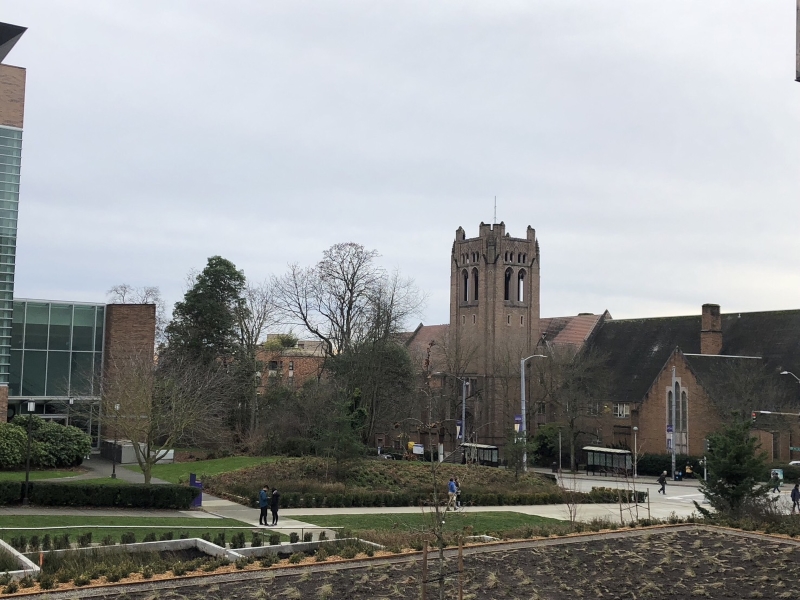
Pros
- It’s a great place for students attending the University of Washington or other institutions along the 1 Line, like Seattle Central College or North Seattle College.
- It’s quiet during the day, though sometimes university students throw parties at night. There are a few fraternity houses in the area as well.
- There are lots of trees in the area. In fall and spring, when leaves cover the sidewalks and streets, the area looks gorgeous. When it snows, the neighborhood looks absolutely amazing.
- The average rental cost is slightly lower than in other neighborhoods because most residents are students.
- Transportation is pretty decent, so getting around is easy. The sidewalks here are well-maintained. If you study at UW, you can literally just walk from here to campus very easily.
- The shopping center “University Village” is nearby. There are several trendy shops and restaurants there, with a QFC for groceries. There are also plenty of casual cafés and restaurants on University Way NE.
Cons
- Though the average rental cost is slightly lower than in other neighborhoods, some fancy places can still be pricey. High demand can also drive prices up, especially when it’s time for a new semester.
- Most apartments don’t have parking spaces, so you’ll likely have to rent one if you own a car.
- It can be less safe at night when drug addicts are around. Also, theft, especially stealing packages and food orders, is common. Stabbings and shootings are less common but usually make headlines.
Housing
Most buildings here are low-rise apartments, condos, and detached houses. Several newly built apartment complexes have appeared as the demand for student housing has risen.
The average rental cost for one-bedroom apartments is US$2,148. However, studios usually start at US$1,500, though you can find some for as low as US$1,000 per month. Detached houses around here can be pricey, but condos start at around US$300,000.
Transportation
The 1 Line runs through the U District station, and several bus routes also serve the area.
Safety
The area is well-known for issues like drug addicts and theft. Packages that are left in front of houses can be stolen. While I was living here, some residents in my apartment building had their packages stolen, even with CCTV cameras in place.
Additionally, I wouldn’t recommend walking alone at night, especially on University Way NE. However, the area closer to the campus grounds is relatively safe, with university police around.
Lifestyle
The area is generally for students, so the restaurants, cafés, and shops mainly serve students, with their youthful and trendy vibes. There’s also a wide variety of Asian restaurants, ranging from Korean and Japanese to Thai, most of which are usually cheap.
Several restaurants on University Way NE are some of the best around. Chi Mac is my go-to for Korean fried chicken. It’s quick, casual, and cheap. Itadakimasu is also among my favorites with its tasty and cheap teriyaki dishes.
U District Street Fair, which is held annually in May, is something that you don’t want to miss.
U Village is one of the best shopping centers for young people in all of Seattle. It has several boutique clothing stores, tech shops, and a modern, pleasant atmosphere that’s enjoyable just to walk around. If you’re craving upscale Western or comfort food, you can also check out JOEY at U Village. They have fancy steaks and ribs and the like.
The Burke Museum of Natural History and Culture, located on the campus grounds, is also worth a visit. It has animal fossils and anthropological/archeological stuff. Some collections are pretty rare.
Who Should Live in the U District?
I wouldn’t say this neighborhood is only for students; anyone can live here. Its vibe, though, can make you feel nostalgic and want to go back to being a student again. Overall, it’s an affordable place that’s easy to get around, filled with trendy restaurants, shops, and cafes.
Which Neighborhood Should I Live in Seattle?
Here’s a quick comparison table to help you choose the right neighborhood to when you move to Seattle.
| Neighborhood | Vibe & Lifestyle | Average Rent (1-Bed) | Safety | Transportation | Best For | Downsides |
|---|---|---|---|---|---|---|
| Downtown | Trendy, urban, high-rise living with strong nightlife and access to attractions | ~US$3,065 | Low (high crime and property theft) | Excellent – walkable, buses, light rail, monorail | Professionals who want convenience and city energy | Expensive, noisy, urban decay, limited parking |
| Capitol Hill | Cosmopolitan, vibrant nightlife, diverse culture | ~US$2,151 | Low (drug activity, protests, thefts) | Good – walkable, light rail, buses | Young adults, creatives, and social people | Homeless issues, safety at night, frequent protests |
| South Lake Union (SLU) | Corporate, upscale, modern, lakeside | ~US$2,737 | Medium (mainly theft, few violent crimes) | Excellent – streetcar, light rail, buses | Tech professionals, quiet city living | Pricey, limited parking, corporate vibe |
| Beacon Hill | Quiet, family-oriented, scenic | ~US$2,000 | High (one of the safer areas) | Fair – light rail, buses, car recommended | Families, car owners, nature lovers | Poor sidewalks, long commute, limited social life |
| U District | Youthful, academic, affordable, full of Asian restaurants | ~US$2,148 | Medium-Low (package theft, some drug activity) | Excellent – light rail, buses, walkable | Students, young adults, budget-conscious residents | Noisy at night, theft issues, limited parking |
In short, if you want an active life and convenience, choose Capitol Hill or Downtown. If you work in tech, South Lake Union is ideal. For families, Beacon Hill offers space and calm, while students will feel at home in the U District.
Other Popular Neighborhoods in Seattle
There are other neighborhoods and nearby cities that I haven’t covered yet. Here’s a quick rundown:
- Queen Anne: a wealthy neighborhood with villas and mansions.
- Wallingford: a quiet, family-friendly area.
- Ballard: an indie neighborhood.
- Bellevue: a high-end city with a suburban feel.
- Tukwila: an affordable neighborhood near the airport, though it has a high crime rate.
These areas certainly have their own unique charm, but for now, I hope this article gives you a sense of what it’s like to live in some of Seattle’s most prominent neighborhoods.
